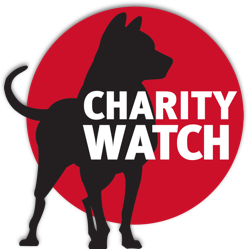Store Checkout Charity Donations
Dec 10, 2022
You are in the checkout line at a grocery or convenience store. Just as you are about to pay and move on with your day you are prompted by the screen or by the cashier to round up your bill or otherwise donate a small amount to a particular charity. There may be a line of people behind you and an uncomfortable feeling of being judged for not wanting to part with a small amount of money for charity. So what should you do?
There Are a Few Upsides to These Types of Store Checkout Donations
· A large volume of people being asked to donate small amounts of money puts less of a financial burden on individual donors while potentially raising a large amount for charity.
· The store is typically absorbing fundraising costs associated with raising the donations by integrating the donation process into a payment function they are already performing—interfacing with a cashier to collect a donation while simultaneously processing your payment for purchases.
· Particularly when funds are being raised for a smaller charity, a store checkout process gives the charity convenient and inexpensive access to a much larger pool of potential donors than it may be able to reach on its own.
All this said, there are also significant downsides to donating to charity in a store checkout line. Any time a donor puts a third party in between their donation and a charity, it increases the chances that their money could get diverted for some other purpose.
A class-action lawsuit was filed against CVS Health Corporation (CVS) in May 2022 accusing the company of “deceptive fund-raising in a campaign it held for the American Diabetes Association,” according to The Boston Globe. Also according to The Boston Globe article, “Prior to each customer’s transaction, a checkout screen prompts the customer with several options for pre-selected dollar amounts, as well as an opt-out option, allowing donations to the diabetes association. Yet, the plaintiff alleges, CVS did not forward donations to the diabetes association, but instead applied the donations toward a legally binding $10 million obligation CVS made to the diabetes association.”
When people head into a store to make some purchases and are prompted in the checkout line to make donations to charity, they aren't in a position to ask a lot of questions. Imagine you are in a hurry and pop into the store to buy some water and hand sanitizer, and there are three people waiting in line behind you. When the cashier prompts you to make a charitable donation, are you really going to set down all your things and grill the employee with questions about the nature of the contract between the company and the charity? Would the cashier even know the answers to your questions? Probably not.
It is almost always a better option to donate directly to the charity of your choice rather than inserting a third-party between your donation and the charity. If there is a cause you are passionate about, navigating directly to a charity's website and making a donation directly is almost always a better option.
Other Potential Issues with Donating At a Store Checkout Rather Than Directly
· There could be a significant time lag between when you make your donation and when the charity receives it.
· When put on the spot in a checkout line, you don't have adequate time to vet the charity to make sure it is operating efficiently and effectively before donating.
· You may not know what types of programs you are supporting. For example, someone against animal testing may not want to donate to a charity that funds medical research that includes such testing. Or, someone donating to an international relief charity may not want to fund the programs of a religious organization that proselytizes to the recipients of its food aid.
· Though less typical, there could be administrative fees that the company deducts from the donations they collect to pay for the cost of operating the donation collection.
· In the worst case, your donation may never make it to the charity at all.
Consider following CharityWatch’s 5 Steps for Informed Giving and viewing our list of Top-Rated Charities as a better method of identifying efficient and effective charities to support.
